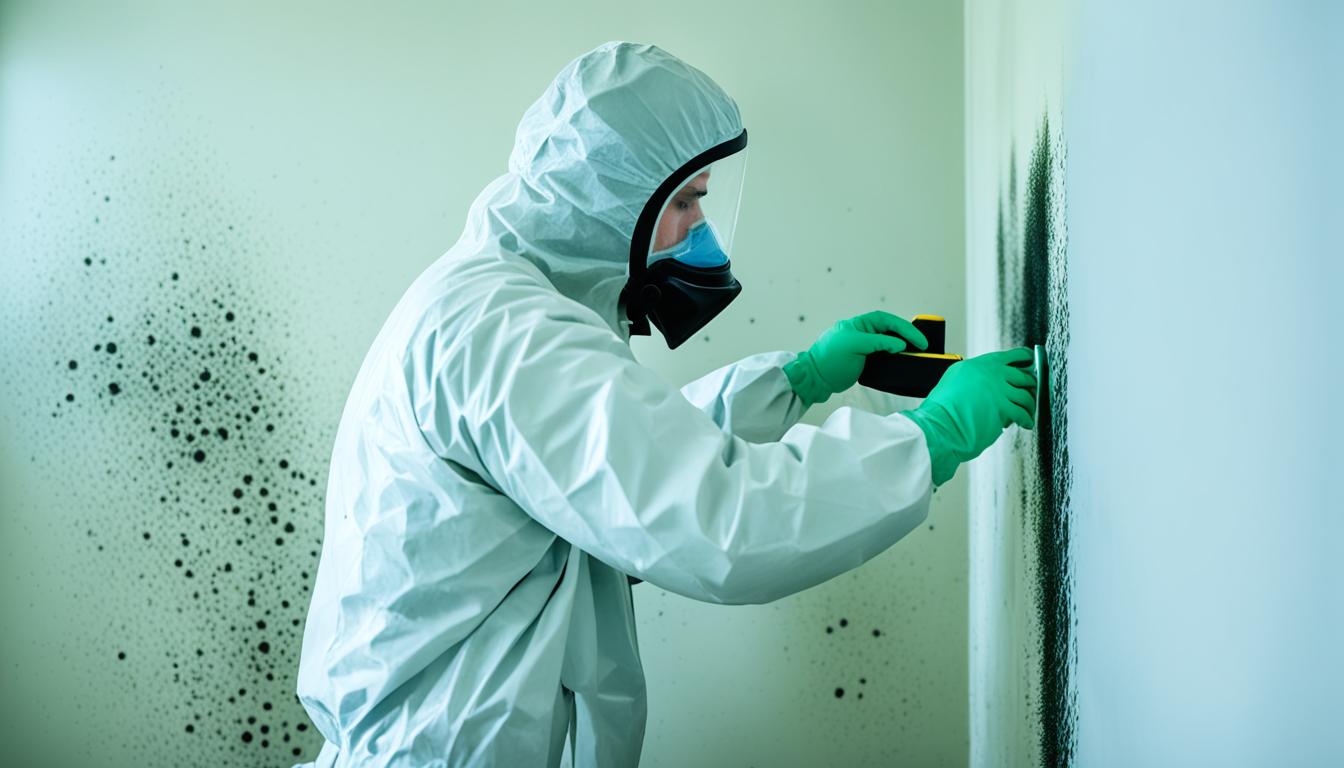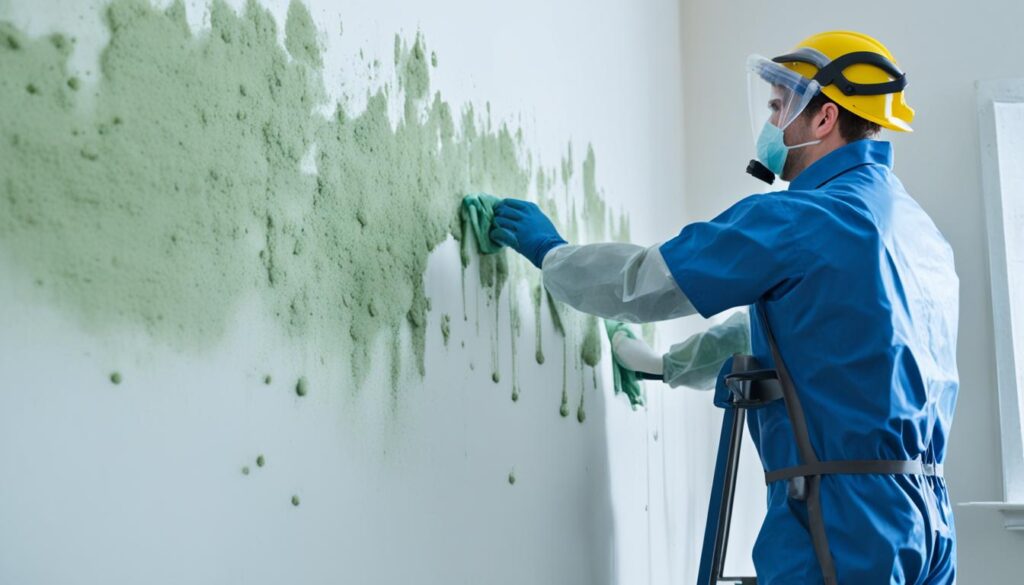
DIY Mold Removal Guide: Safe & Effective Tips
Welcome to our comprehensive DIY mold removal guide, where we will provide you with safe and effective tips to tackle mold issues in your home. Whether you’re dealing with a minor patch or a more extensive infestation, our guide will equip you with the knowledge and techniques needed to successfully remove mold on your own.
Mold growth can be a common problem in households, especially in areas with high humidity levels or water damage. It not only poses health risks but can also cause structural damage to your property if left untreated. By following the proper steps and safety precautions, you can rid your home of mold and create a healthy living environment for you and your family.
In this guide, we will take you through the essential steps of DIY mold removal, from identifying the presence of mold, preparing the affected area, employing the right techniques for removal, and using the necessary materials for a thorough cleanup. With our expert advice, you’ll be able to address the issue efficiently and cost-effectively.
Remember that your safety should always remain a top priority during the mold removal process. Make sure to wear personal protective equipment such as gloves, goggles, and a mask to minimize exposure to mold spores. Proper ventilation is also crucial to prevent the spread of mold during removal.
Key Takeaways:
- DIY mold removal is a cost-efficient solution for tackling mold issues in your home.
- Understanding the dangers associated with mold growth is crucial before starting the removal process.
- Following essential steps such as identifying mold, preparing the affected area, and using the right techniques and materials will ensure effective results.
- Prioritize safety by wearing appropriate protective gear and ensuring proper ventilation during the removal process.
- If you require professional assistance or are dealing with severe mold problems, contact Fix Mold Miami at 305-465-6653 for top-rated mold assessments, prevention, and remediation services in Florida.
Understanding the Dangers of Mold Growth
Before we delve into the mold removal process, it’s crucial to understand the dangers associated with mold growth. Mold can pose serious health risks and cause extensive damage to your home if left unaddressed. Therefore, it is essential to take proper safety precautions when dealing with mold removal.
Potential Health Risks:
- Mold can trigger allergic reactions, such as sneezing, coughing, and irritation of the eyes, nose, and throat.
- Individuals with respiratory conditions, allergies, or weakened immune systems may experience more severe symptoms when exposed to mold.
- Prolonged exposure to mold may lead to respiratory infections, asthma attacks, and other respiratory problems.
Damage to Your Home:
- Mold growth can cause structural damage to your home, compromising its integrity over time.
- Mold can stain and deteriorate surfaces, including walls, ceilings, and furniture.
- If left untreated, mold can spread and infest larger areas of your home, making the remediation process more challenging and costly.
Taking proper safety precautions during the mold removal process is crucial to protect yourself and prevent further damage. To ensure your safety, wear protective gear, such as gloves, goggles, and a mask, to avoid direct contact with mold spores.
Remember, mold removal safety is paramount. Always prioritize your well-being and follow the recommended guidelines to minimize health risks and preserve the integrity of your home.

Essential Steps for DIY Mold Removal
To successfully remove mold yourself, it is important to follow a series of essential steps. These steps will guide you through the process, ensuring a thorough and effective cleanup. Whether you are dealing with a small patch of mold or a larger infestation, following these steps will help you address the problem safely and efficiently.
Step 1: Identify the Mold
The first step in DIY mold removal is to identify the presence of mold in your home. Look out for visible signs of mold, such as black or green spots on walls, ceilings, or other surfaces. Musty odors and water damage are also indicators of mold growth. If you suspect mold but cannot visually confirm it, consider hiring a professional mold inspector for an accurate assessment.
Step 2: Prepare the Affected Area
Before starting the removal process, it is crucial to prepare the affected area. This involves isolating the contaminated space to prevent mold spores from spreading to unaffected areas of your home. Seal off the room with plastic sheets, close vents and doors, and use airtight containers for any mold-infested materials you need to dispose of.
Step 3: Choose the Right Techniques for Removal
The technique you choose for mold removal will depend on the extent and type of mold infestation. Common techniques include scrubbing the affected surfaces with a mixture of detergent and water, using a bleach solution for non-porous materials, or opting for natural alternatives like vinegar or hydrogen peroxide. Each technique has its advantages and considerations, so be sure to research and select the most suitable method for your specific situation.
Step 4: Use the Necessary Materials
Equipping yourself with the right materials is crucial for effective mold removal. Some common materials you may need include gloves, safety goggles, a respirator or mask, cleaning supplies, scrub brushes, plastic bags for disposal, and proper ventilation. Ensure you have all the necessary materials on hand before starting the removal process to minimize disruptions and ensure a smooth operation.

By following these essential steps, you can effectively tackle mold removal on your own. Remember to prioritize safety and take necessary precautions throughout the process. In the next section, we will conclude by summarizing the key takeaways from this DIY mold removal guide.
Conclusion
Now that you have our DIY mold removal guide at your disposal, you can confidently address mold issues in your home. By prioritizing your safety and following the recommended steps and techniques, you’ll be able to safely and effectively remove mold. Remember, prevention is key, so stay proactive in maintaining a mold-free home environment.
If you’re dealing with a severe mold problem or need professional assistance, don’t hesitate to contact Fix Mold Miami at 305-465-6653. As Florida’s highest-rated in mold assessments, prevention, and remediation services, Fix Mold Miami has the expertise and experience to handle your mold issues effectively and efficiently. Trust the experts to provide you with comprehensive solutions for a healthier living environment.
Don’t let mold take hold in your home. With our mold removal guide and the help of Fix Mold Miami, you can reclaim your space from the dangers of mold and enjoy a clean, safe, and mold-free living environment for you and your family.




